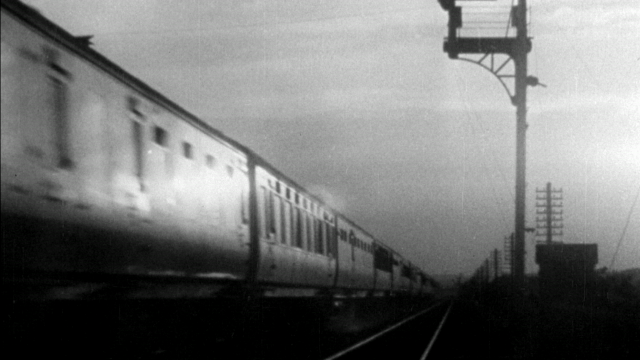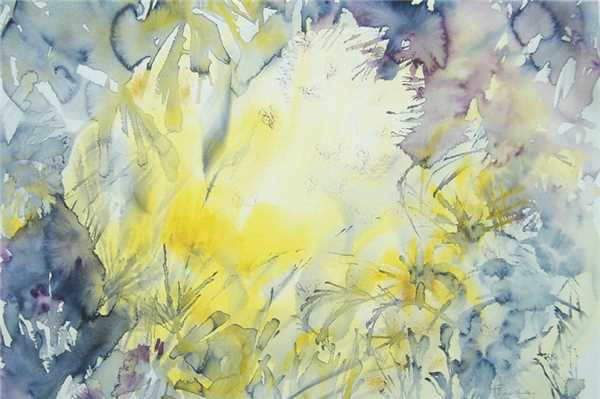Peter Grimes – Opera in three acts and a prologue, Op.33 (January 1944 – 10 February 1945, Britten aged 30)
Dedication For the Koussevitzky Music Foundation, dedicated to the memory of Natalie Koussevitzky
Text Montagu Slater, after a poem by George Crabbe
Language English
Duration 145′
Audio and Video clips
The trailer for the 2013 production for the Aldeburgh Festival, Grimes on the Beach:
Selected clips from the opera’s first recording, conducted by Benjamin Britten with Peter Pears in the title role. With thanks to Decca.
Prologue
“Peter Grimes!”
Interlude I: On the Beach (orchestra)
Act 1
“Oh, hang at open doors” (chorus)
“What harbour shelters peace” (Grimes)
Interlude II: The Storm
“Now the Great Bear and Pleaides” (Grimes)
Act 2
Interlude III: Sunday morning by the beach (orchestra)
Fool to let it come to this!
Now is gossip put on trial
From the gutter (Ellen, Auntie and the nieces)
Interlude IV: Passacaglia
“Peter Grimes! Nobody here?”
Act 3
Interlude V: Evening
“Grimes! Grimes!”
“Peter, we’ve come to take you home”
“To those who pass the borough (chorus)
The Plot
Crabbe was a Suffolk poet, and Peter Grimes, whose tale is told in The Borough, is a Suffolk fisherman.
Grimes loses an apprentice to malnutrition, after a long period at sea in pursuit of a large catch. He is acquitted of any wrong doing, but much of the community in The Borough, where he lives, judge him to be guilty and turn against him. He then loses another apprentice to a combination of bad weather and overwork.
During the opera The Borough, who are self-appointed judge and jury, enhance his guilt, make him feel more of an outsider and, following the death of the second apprentice, effectively condemn him to sign his own death warrant.
The tale ends with Captain Balstrode convincing Grimes that the best thing for him is to sink his boat. Grimes takes his advice, sailing his own fishing boat out to sea and going down with it, the only true outcome for peace in the village. The sea, ‘with strong majestic sweep’, has the last word.
Background and Critical Reception
When they returned to England from America, Britten and Pears were outsiders. Having registered as conscientious objectors to the war on their arrival, it was also known – if not widely talked about – that they were now a couple. Thus their integration back into life in England did not always run smoothly.
It is, then, little surprise that Britten’s first fully fledged opera should explore the theme of the outsider with consistently searching intensity. No work of his had occupied him as much until now. From start to finish, Peter Grimes took just over a year and a month to complete – but it had been in Britten’s mind since America, when he and Pears discovered a copy of George Crabbe’s poem The Borough in a Los Angeles bookshop.
Accompanying this was an article about Crabbe that Britten found in The Listener. Written by E.M. Forster, it contains a pictorial description of Aldeburgh and its surrounding habitat. This almost singlehandedly forced Britten and Pears into returning, and the composer set to work almost in this very location, writing much of the opera from his new base, the Old Mill at Snape.
The tale has autobiographical strands that resonate strongly with Britten’s own life. There is the irresistible parallel of the Suffolk coast and the judgments of the community on an individual who is ‘different’ and maybe ‘lacking’ in the supposed qualities that other people possess. For Grimes, like Britten, is socially different – but not beyond understanding, as proved by his closest friend in the opera, Ellen Orford.
Ever since its premiere Peter Grimes has been viewed not just as a key work for Britten, and indeed Britain, but for twentieth century opera beyond. There is so much written material on it to do full justice here, but dipping in gives a few ideas.
David Matthews highlights one particular example. ‘If one had to single out an episode in Peter Grimes as an example of great operatic music, it would be the quartet for the women in Act II. This is the moment where Ellen, Auntie and the ‘nieces’ combine in expressing their pity for Peter’s fate and for the plight of all men in a lilting barcarolle. The three verses each climax – significantly on the word ‘sleep’ – in a torrent of high, sensuous sound that evokes unlikely comparisons with Der Rosenkavalier…before we are returned, with the Passacaglia, to the cruel world of reality. This duality is at the very heart of Britten’s artistic vision’.
A new book by Hans Keller, Britten: Essays, Letters and Opera Guides, devotes a chapter to the ‘notes for a recording’ he wrote on Peter Grimes in 1952. It is incredibly perceptive, declaring that ‘in each of us there is something of a Grimes, though most of us have outgrown or at least outwitted him sufficiently not to recognise him too consciously. But we do identify him, and ourselves with him, unconsciously, which is one reason for the universal appeal of this work’.
Thoughts
Peter Grimes is an all-consuming experience, a work of stunning musical power but also a bleak moral tale that raises just as many questions as it answers.
Britten gives Grimes a profile that balances perfectly our sympathies and revulsion. Is he good or bad? Understood or misunderstood? Often the answer lies in the middle, and we get to see his good – usually in the more tender scenes with Ellen Orford, who does understand him – but also his bad, when he insists on taking his apprentice out to sea in the teeth of a howling gale. Each listen to the opera found me alternately siding with him and condemning him, often against my better judgement.
Musically, Britten’s evocations of the characters and the sea are incredibly sharply focused. Very few composers have written such vivid seascapes as this, but Britten actually writes three distinct portraits, heard most pertinently in the orchestral interludes but spilling over to the vocal numbers, where they also represent the mood of the plot. The sea dominates the opera, taking its lead from his teacher Frank Bridge and his own portraits in the symphonic poem The Sea.
To me the otherworldly Dawn interlude, with its eerie calls on the wind, to me paints birds disturbed into sudden flight from the long reeds. It is at once evocative and a little ominous, establishing an immediate tension that does not let up until the final notes, some two-and-a-half hours later.
Britten’s next picture of the sea is in a storm, raging offshore with gale force winds. This transfers to the local pub The Boar, where the Borough townsfolk are busy passing judgement on Grimes not just in his absence but also when he arrives. They are the tabloid journalists and soap opera cast of their time, and are absolutely vital to the opera. Britten takes time to colour in their characters, often within a raucous crowd setting.
During the storm interlude the view suddenly pans out with an expansive string melody – also taken up by Grimes – where you can almost see the moonlight shimmering on the waves. One of Britten’s great arias, Now the Great Bear and the Pleiades, occurs at this point, an exquisite piece of work that operates, typically of the composer, on almost one note alone, held above a slowly shifting harmony.
The orchestral Passacaglia, heard towards the heart of Act 2, responds to the turning point of the opera. It confirms what we (and Ellen Orford) suspected, that Grimes has made a catastrophically bad decision to take his second apprentice out to sea in inclement weather. Interestingly the main theme is first heard on the viola, Britten’s own instrument, heightening the sense of connection between him and Grimes.
Britten’s third picture of the sea, the last of five interludes in total, is at night, where the moonlight is more peacefully drawn. Here though the music is weighed down with anguish and regret, the pulsing strings like dropping tears, for this is where the second apprentice has died, and Grimes knows he has done wrong, that his fate is sealed. There is however just a tinge of romance, as views of the sea in these conditions tend to have.
Britten puts his spatial awareness to keen dramatic use throughout the opera. The Sunday morning scene is a prime example. As Ellen Orford discovers a bruise on John, Peter’s second apprentice, the rector and congregation continue to exchange the formalities of Mattins offstage. The two are not independent of each other, though, for Peter’s words are mirrored by subtle pronouncements in the text of the Benedicitus.
As John Bridcut says, Peter Grimes, quite apart from laying claim to be the ‘greatest British opera ever written…is certainly one of the world’s enduring operatic landmarks of the twentieth century’. It is utterly dramatic from start to finish. That Britten managed this with pretty much his first attempt at opera is nothing short of staggering, completing a haunting tale whose message and music stays with the observer long after it has finished.
A couple of words of warning – hearing the words ‘Peter Grimes!’ sung at full power by an opera chorus over and over again, as occurs at the climax of Act 2, can be the last straw in an exhausting experience. Perhaps this is why I find listening to Grimes on headphones gives you a headache. That, if nothing else, shows just how intense a drama this really is!
Recordings used
DVD
Philip Langridge (Peter Grimes), Janice Cairns (Ellen Orford), Alan Opie (Balstrode), Ann Howard (Auntie), English National Opera Chorus and Orchestra / David Atherton (Arthaus)
A film of the 1994 ENO production which has a powerfully dark centre. The tension never lets up, the chorus right up in the face of Grimes and the viewer as they chip away at his sanity. This is a weather-beaten production, fully caught up in the plot and its setting, and Langridge is superb as Grimes.
CD
Peter Pears (Peter Grimes), Claire Watson (Ellen Orford), James Pease (Balstrode), Jean Watson (Auntie), Chorus and Orchestra of the Royal Opera House / Benjamin Britten (Decca)
Jon Vickers (Peter Grimes), Heather Harper (Ellen Orford), Jonathan Summers (Captain Balstrode), Elizabeth Bainbridge (Auntie), Chorus and Orchestra of the Royal Opera House / Sir Colin Davis (Philips)
Anthony Rolfe Johnson (Peter Grimes), Felicity Lott (Ellen Orford), Thomas Allen (Captain Balstrode), Patricia Payne (Auntie), Chorus and Orchestra of the Royal Opera House / Bernard Haitink (EMI)
Alan Oke (Peter Grimes), Giselle Allen (Ellen Orford), David Kempster (Captain Balstrode), Gaynor Keeble (Auntie), Chorus of Opera North with the Chorus of the Guildhall School of Music and Drama, Britten-Pears Orchestra / Steuart Bedford (Signum Classics)
Britten’s recording, made for Decca, is one of the twentieth century’s landmark recordings, and cemented an already productive relationship he had with the record company. Although it was made in 1958 mono sound it remains in extremely good condition, and the spatial effects that are key to this opera are all realistic. The singing is incredibly strong, the orchestral playing too, and Peter Pears as Grimes is at his most convincing when madness takes hold near the end.
Sir Colin Davis contributed two very fine accounts. For Philips he made only the opera’s second recording in 1978, with Jon Vickers and Heather Harper, while in 2004 he returned to the work with Glenn Winslade and Janice Watson for LSO Live. Britten was not so sure of his view of the opera, however, as Sir Colin revealed in a BBC documentary. “I don’t think Benjamin Britten liked it. He sent me a letter. Was he critical? Yes, he always was, but we had a feeling he hadn’t quite realised what he’d let loose. It’s a very violent piece, but it has some wonderful music. I think he thought I took much too much freedom with it”. Nonetheless, Sir Colin’s first recording is a mighty powerful one, and though there are differences of opinion in Vickers’ Grimes. Some think he is even closer to what Britten intended than Pears.
Other versions are hardly shrinking violets either. Haitink’s orchestra play tremendously, captured in technicolour by the EMI engineers. His Grimes is Philip Langridge, who reprises the role with Richard Hickox on Chandos. Most recently the cast of Grimes on the Beach are also very fine, with the incisive orchestra conducted by Steuart Bedford, whose chorus feels more balanced and, at the end of Act 3, is raw and powerful.
More recently Stuart Skelton, star of ENO’s production in 2009, has made the role his own, and a first recording with him in it would be eagerly awaited indeed. It would further strengthen an already formidable discography.
Spotify
Grimes is well represented on Spotify. Britten’s 1958 recording can be accessed here, while Sir Colin Davis can be found by clicking here for the Philips version, and here for LSO Live. Bernard Haitink’s version is here. Richard Hickox conducts a very strong version on Chandos, with Philip Langridge as the lead character, here
Also written in 1945: Richard Strauss – Metamorphosen
Next up: Four Sea Interludes from Peter Grimes, Op.33a










